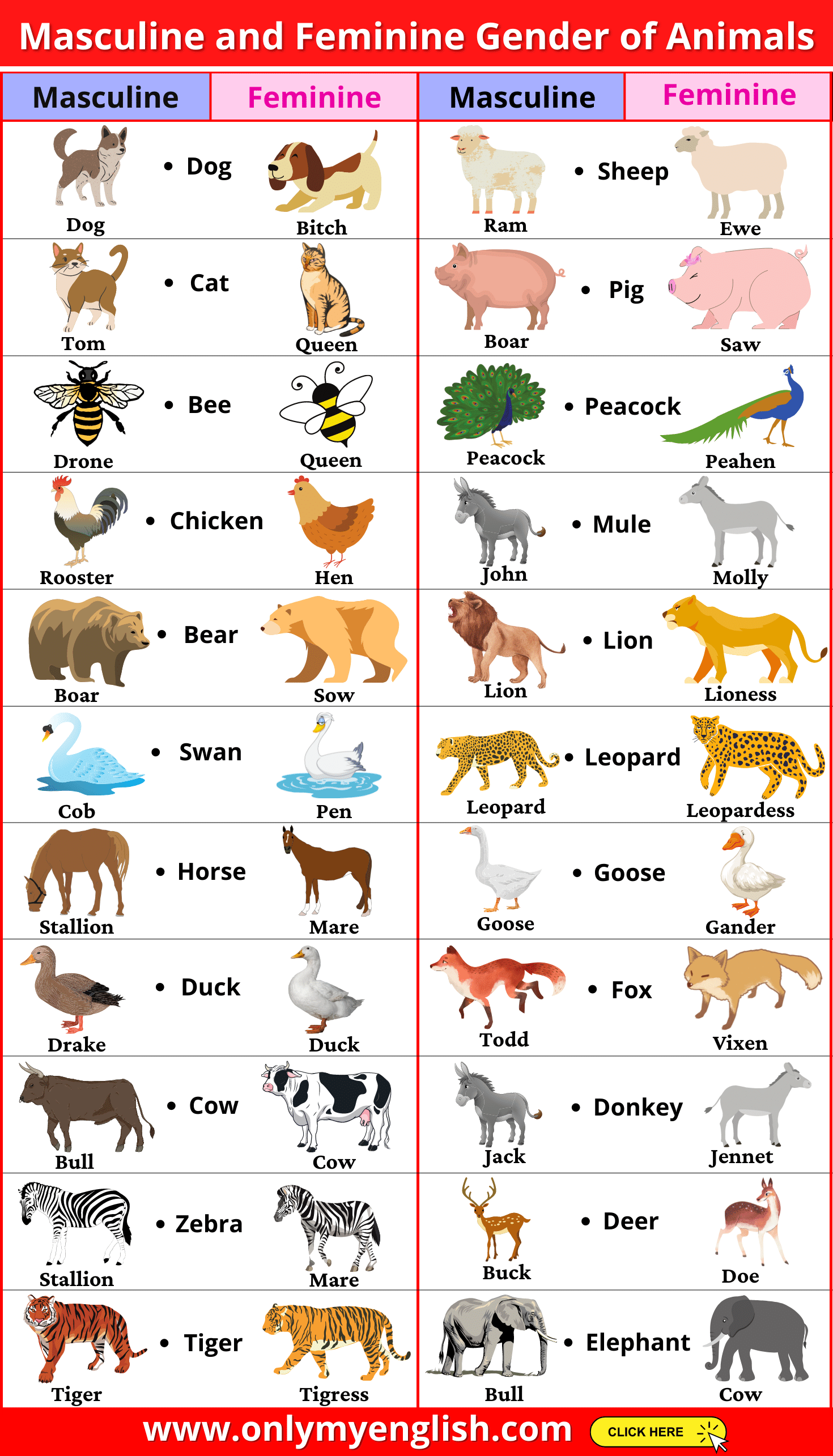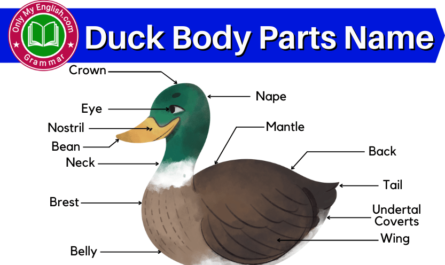Are you looking for a list of all human body parts name in English with pictures? Here, We have a complete list of all the different types of human body parts names with Images.
Body Parts Name
The human body is a structural part of the human being. It is composed of various types of cells that together form tissue and a group of tissues combine to make an organ and certain organs combine functions to make a system on which a human body performs functions.
The list of the human body parts varies accordingly to the reference of different systems. The study of the different parts of the body or living organisms in science is called anatomy science.
Around, there are 79 organs in the human body, all five parts are crucial parts for the survival of human beings, damage to these organs is termed as results in the termination of life. These five parts are the brain, heart, liver, lungs, and kidneys.

All Body Parts Name in English
The human structure can also be described as the essential part, covered with hairs, the presence of the mammary glands, and the senses organs are well developed. The body consists of many body cavities and separated areas that are placed in the different organ systems. The external changes to the body like height, shape, weight, and other proportions may vary individually by gender and age.
Human Body Parts Pictures with Names
| Sr no. | Image | Body Parts Name |
|---|---|---|
| 1. |  | Head |
| 2. |  | Forehead |
| 3. |  | Hair |
| 4. |  | Ear |
| 5. |  | Eye |
| 6. |  | Nose |
| 7. |  | Cheek |
| 8. |  | Neck |
| 9. |  | Mouth |
| 10. | 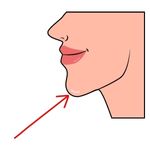 | Chin |
| 11. |  | Shoulder |
| 12. | 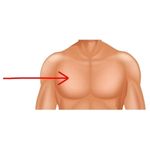 | Chest |
| 13. |  | Umbilicus |
| 14. |  | Arm |
| 15. |  | Elbow |
| 16. |  | Abdomen |
| 17. | 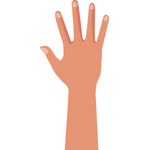 | Hand |
| 18. |  | Wrist |
| 19. |  | Thumb |
| 20. |  | Finger |
| 21. |  | Knee |
| 22. |  | Calf |
| 23. |  | Leg |
| 24. |  | Foot |
| 25. | 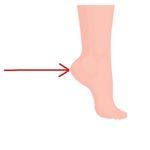 | Heel |
| 26. |  | Toes |
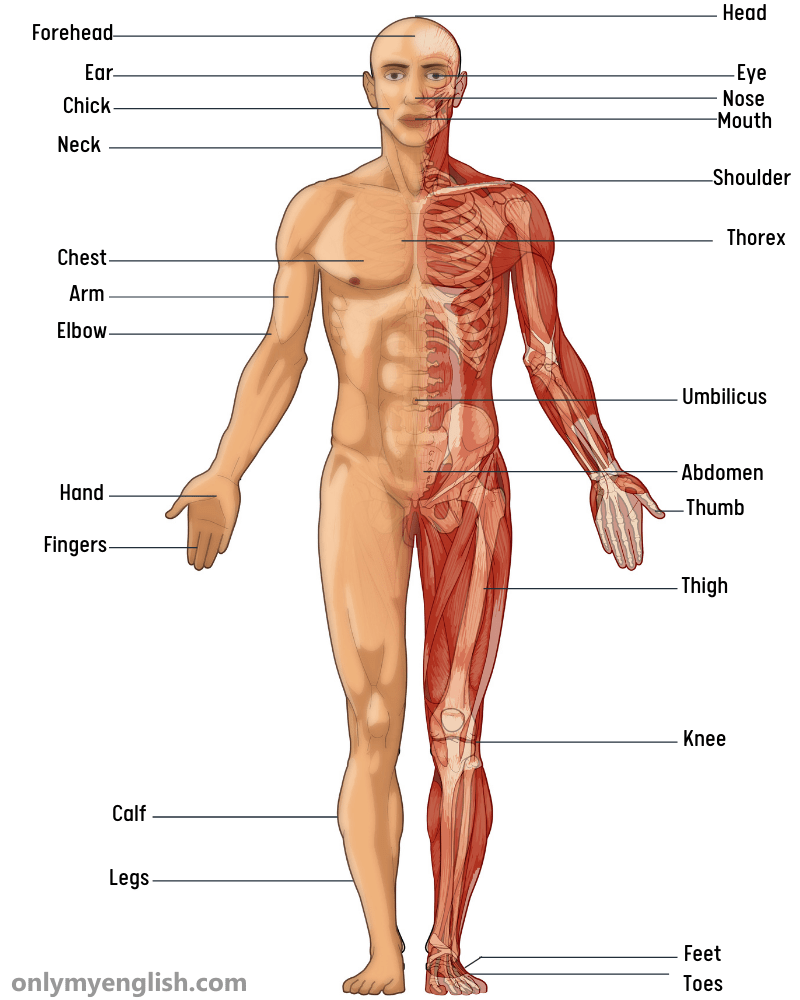
Full Body Parts Name with Details
Head
The head is a part of the human body and also the topmost portion of it. It includes some other parts like ears, nose, eyes, cheeks, chin, brain, mouth, and tongue; each is a sensory functional part. The head is a bilateral symmetric part of the body, irrespective of its size.

Forehead
The forehead is a portion of the head that is surrounded by three characteristics, two of the skull and one of the scalp. The top side of the forehead is surrounded by hairs, and the bottom portion is marked by the supraorbital ridge, the bone feature of the skull above the eyes.

Hair
The hair which attaches to the entire skin of the body is called the hair follicle. The hair bulb forms the base of the hair follicle, which is nourished by the blood vessels present in the body. Hair growth depends on the hormones of the body and the growth of life, and age.

Ear
The ear is a hearing organ of the body that has three different parts – the outer ear consists of the pinna and the ear canal, the middle ear consists of the tympanic cavity and three ossicles, and the inner ear has the bony labyrinth. The ears of the vertebrates are placed on either the symmetrical side of the head.

Eye
The human eye is an organ that reacts to the light and the visions which are allowed by the cells. The eyes contain the retina, pupil, and other cells which are used to visualize an image when we look at something. The human eye can be differentiated about the 10 million colors which are possibly capable of detecting a single photon.

Nose
The nose of the human body is placed in front of the face. The nostrils present in the nose are the first organ of the respiratory system. The nose is an important organ for the olfactory system.

The shape and the size of the nose depend on the cartilage, including the septum that is separated by the nostrils and the nasal cavity is divided into two.
Cheek
The cheeks are present in the face below the eyes and between the nose and both the left and right ear. The region is surrounded is called the buccal nerve and is present between the inside of the cheek and the teeth and gums, also called the vestibule.

Neck
The neck is a part of the body with the torso present below the head, and it provides the head to do the movement. Structurally, the human neck has anatomically grouped into four compartments- vertebral, visceral, and two vascular compartments. Within these compartments, the duct or glands passed from the head to the abdominal portion of the body through the thorax part.

Mouth
The human mouth is the first portion of the alimentary canal which is connected to the esophagus and is located above the chin and below the nose. The coverings of the mouth are called the lips.

Chin
The human chin refers to the forward pointed part of the anterior mandible 2 below the lower lip. Some obese people may appear to have a double chin due to tho the multi-layered skin on the face.

Shoulder
The human shoulder is made up of three bones named, the cervical, the scapula, and the humerus. Also, the muscles surrounding these bones are ligaments and tendons. The shoulder joint is also known as the glenohumeral joint, which is the major joint of the shoulder.

Chest
The thorax is another name for the chest, which is a part of the anatomy of humans and also various other animals. The thorax is located between the neck and the abdomen. It includes the thoracic cavity and the thalamus gland—also various muscles and internal structures.

Umbilicus
The umbilicus is used to separate the abdomen into quadrants. It is a prominent scar on the abdomen, and the position is relatively constant among humans.

Arm
In humans, the arms are the upper limbs present between the glenohumeral joint and the elbow joint. Arms can be divided into two, the upper arm extends from the shoulder and the elbow, and the lower arm also called the forearm extends from the elbow to the hand. This is symmetrical to either side of the body attached to the shoulder joints.

Elbow
The elbow is a visible joint between the upper arm and the lower forearm. It includes prominent marks such as the elbow pit, epicondyles, elbow joint, and olecranon. The elbow joint is a synovial hinge joint between the humerus and the radius and ulna in the forearm, which tends to move the lower arm at 180 degrees.

Abdomen
The abdomen is the part of the human body between the thorax and pelvis, and also in other vertebrates. The abdomen is the front part of the abdominal segment of the trunk. The occupied area by the abdomen is called the abdominal cavity. Most of the organs are present in this section of the human body.

Hand
The hand is a prehensile, multi-fingered palm located below the forearm or forelimb of primates such as human beings, chimpanzees, monkeys, and lemurs.

Wrist
In human anatomy, the wrist is variously defined as the carpus or carpal bones. It is a combination of eight carpal bones in a proximal skeletal segment. The anatomical region is surrounded by the carpus including the forearm and the proximal part of the metacarpus and the five metacarpal bones of the fingers.

Thumb
The thumb is said to be the first digit of the hand. When a person is standing in the medical anatomic position, the thumb is called the outermost digit. It consists of only two phalangeal bones.

Finger
The finger is a limb of the human body and a type of digit. It is an organ of manipulation and sensation in the hand. Generally, humans have five fingers; the bones that are present in the fingers are called phalanges. Fingers are named the thumb, the index finger, the middle finger, the ring finger, and the little finger.

Knee
The knee is a joint between the femur bone and the tibia bone connected to the patella bone, also called the kneecap. The knee is responsible for keeping connected these two bones and due to this patella bone which is a triangular-shaped bone, the leg is only bent backward.

Calf
The calf is the back portion of the lower leg. In human anatomy, muscles within the calf correspond to the posterior compartment of the leg. The two largest muscles within this compartment are called the calf muscle. The smaller muscles are attached to the knee, ankle, and toes.

Leg
The leg, in general words, is the entire limb of the human body, including the toes, foot, thigh, and calf, even the hip or gluteal region. It is used for standing, and to do all kinds of locomotion like dancing, running, etc. the female legs generally have greater hip anteversion and tibiofemoral angles, but in males, the femur and tibial lengths are shorter.

Foot
The foot is an anatomical structure found in many vertebrates. It is the terminal portion of a limb that bears weight and allows locomotion. It includes five segments of the metatarsal bone, including claws or nails.

Heel
The heel is the bulge at the back end of the foot. It is based on the projection of one bone, calcaneus, or heel bone. It presents behind the junction of the bones of the lower leg.

Toes
The toe is said to be the digits of the foot. It refers to a part of the human foot, with five toes present on each human toe, each toe consists of three phalanx bones, called the proximal, the middle, and the distal bone, except for the big toe. It only contains two phalanx bones, the proximal and the distal bone.

Read Also:
